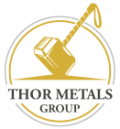Rolling over funds into a gold IRA can be a strategic way to diversify your retirement portfolio with physical precious metals—so long as you follow IRS rules carefully. You can fund a gold IRA through a direct rollover, where money is transferred from one custodian to another, or through an indirect rollover, where you’re responsible for depositing the funds yourself within a limited timeframe.
In this guide, we’ll walk you through how gold IRA rollovers work, outline the steps to avoid triggering taxes or penalties, and explain how to choose a reputable company to manage the process from start to finish.
Table of Contents
What is a gold IRA rollover?
A gold IRA rollover is the process of transferring funds from an existing retirement account—such as a traditional IRA, Roth IRA, 401(k), or similar plan—into a self-directed IRA that is backed by physical gold or other IRS-approved precious metals. This strategy allows investors to diversify their retirement portfolios with tangible assets like gold, silver, platinum, or palladium.
Unlike traditional IRAs that typically hold paper assets such as stocks and mutual funds, a gold IRA is structured to hold physical precious metals stored in an approved depository.
If done correctly, a gold IRA rollover can be completed without triggering taxes or early withdrawal penalties. However, failing to follow IRS rollover rules can result in significant financial consequences:
- Taxes: If the rollover is not completed within the IRS-mandated 60-day window, the amount may be treated as a distribution. This means the funds could be considered taxable income for the year.
- Early withdrawal penalty: If you’re under age 59½ and the rollover is mishandled, you could also face an additional 10% early withdrawal penalty on top of the income tax owed.
- One-rollover-per-year rule: The IRS allows only one indirect rollover per 12-month period across all your IRAs. Violating this rule could make the transfer ineligible and subject you to the same taxes and penalties.
To avoid these issues, many investors choose a direct rollover, where funds are transferred straight from the old account to the new gold IRA custodian, minimizing risk of mishandling and ensuring IRS compliance.
Once the funds are securely rolled over, they can be used to purchase IRS-approved gold or other precious metals within the gold IRA.
How to complete a 401(k) to gold IRA rollover without penalty
You can roll over your existing retirement account or IRA into a new gold IRA in four steps. Here is what that process looks like:
1. Open a gold IRA
To open a gold IRA, you’ll need a self-directed IRA account and a designated custodian to manage it. These custodians report to the IRS, so they must be approved by the agency to operate.
You will also need a metals dealer to sell you IRS-approved gold and a secure storage facility.
Your best bet is to start with an experienced gold IRA company to walk you through setting up your account, funding it, and choosing the appropriate vendors and investments.

Once your gold IRA is ready, you can begin rolling over part or all of your funds from another IRA or retirement account, including 401(k)s, 403(b)s, thrift savings plans, and more.
2. Contact your retirement plan administrator and complete the paperwork
To initiate the rollover, contact your existing retirement plan or IRA administrator and tell it you want to roll over funds into your new IRA account. The administrator will have the required forms and paperwork for you to complete.
The two major types of rollovers are direct and indirect.
- Direct rollover: Direct is when your money is transferred electronically or a check is made out in the new administrator’s name for your benefit (preferred method).
- Indirect rollover: Indirect is when a check is made out to you, and the IRS requires withholdings of 20% in taxes for retirement plans and 10% for IRAs (not preferred).
Remember that you must redeposit the funds into a new IRA or retirement plan within 60 days to avoid penalties. The entire account balance, including whatever was withheld for taxes, must be redeposited within 60 days.
3. Purchase your gold
Once the funds are deposited in your new IRA, choose the IRS-approved precious metals you’d like to invest in and direct your custodian to purchase them.
It’s important to know that the IRS has very specific rules about what types of gold and other precious metals can be included in an IRA.
The custodian of your gold IRA can help guide you through the process. It’s crucial to ensure only IRS-approved precious metals are purchased and added to your IRA, as required by law.
4. Have the gold shipped to an approved storage facility
Your custodian will have a recommendation on how to handle this. Not only does the IRS have specific rules about the types of gold and precious metals you can include in an IRA, but how these must be stored. These investments must be held by a bank or a non-bank trustee that’s approved by the IRS.
Monitor your account once the gold has been purchased and shipped to an approved storage facility. Check in regularly to see how your investments are doing. Depending on how your IRA is performing, you may want to consider a future annual rollover into the account if you want to buy more gold.
If you no longer want to invest in gold, you could also consider an annual rollover into a more traditional IRA. Like any investment, if you’re unsure of what’s best, working with an expert to get the best possible advice can be helpful.
There are risks of rolling over funds from a 401(k) to an IRA (not specific to gold). 401(k)s are protected from creditors in bankruptcy, while IRA protection may vary by state. If you retire early, you also have the potential to access funds from your 4011(k) as early as age 55. In most cases, you can’t begin IRA distributions without a penalty before the age of 59.5.
Expert take
How much does a gold IRA rollover cost?
You can expect to pay fees for a gold IRA rollover. Not only will you likely pay a one-time fee to setup your new gold IRA, but also recurring fees for the custodian to administer your account, to store the gold, and for each transaction, amongst others.
Not only can these fees vary by custodian, but they could reduce your IRA’s earning potential. That said, shopping around and comparing fees before selecting a gold IRA is crucial. Taking time to learn about the fee structure can help you better understand the future returns on your investment.
Will I pay taxes on a gold IRA rollover?
You won’t face tax penalties with a direct custodian-to-custodian rollover of funds, but you could with an indirect rollover. To avoid these penalties, you must deposit your funds within 60 days of receiving them from your 401(k) provider.
Upon withdrawal, the tax implications depend on what type of self-directed IRA account you’ve chosen.
- If you have a traditional IRA, you’ll pay taxes on any funds you withdraw in retirement.
- If you have a Roth IRA, you’ll pay those taxes before investing them in your account, making your withdrawal tax-free.
It’s possible for gold returns to be higher in traditional IRAs than in Roth IRAs. However, like any investment, higher returns are not guaranteed. Depending on the market, the returns could be lower.
The best gold IRA rollover companies
Rolling over funds into a gold IRA isn’t something you can do entirely on your own—you’ll need to work with a specialized company. These providers help set up your self-directed IRA, handle all the paperwork, guide you through IRS compliance, and ensure your physical gold is stored securely in an IRS-approved facility.
Choosing the right provider is key to a smooth and penalty-free rollover. Look for companies that offer:
- Transparent fees : Avoid surprise charges by comparing setup, storage, and annual maintenance fees.
- Strong reputation: Check third-party reviews and ratings to confirm trustworthiness.
- Responsive customer support: You’ll want helpful, knowledgeable guidance throughout the rollover process.
- End-to-end service: The best companies assist with everything from paperwork to choosing eligible metals and arranging secure storage.
Gold IRAs typically come with annual fees and varying service levels, so it’s worth comparing a few options. Our guide to the best gold IRA companies highlights top-rated providers we’ve vetted and recommend. Here are some featured companies below.
| Company | Best for… | Rating (0-5) |
|---|---|---|
|
Best Overall (866) 525-9625 |
||
|
Best for Small Investments (888) 612-4511 |
||
|
Best Buyback Program (866) 427-7710 |
||
|
Best Online Experience (866) 515-6340 |
||
|
Best for Quick Setup (877) 583-2399 |
About our contributors
-
 Written by Megan Hanna, CFE, MBA, DBA
Written by Megan Hanna, CFE, MBA, DBADr. Megan Hanna is a finance writer with more than 20 years of experience in finance, accounting, and banking. She spent 13 years in commercial banking in roles of increasing responsibility related to lending. She also teaches college classes about finance and accounting.
-
 Reviewed by Chloe Moore, CFP®
Reviewed by Chloe Moore, CFP®Chloe Moore, CFP®, is the founder of Financial Staples, a virtual, fee-only financial planning firm based in Atlanta, Georgia, and serving clients nationwide. Her firm is dedicated to assisting tech employees in their 30s and 40s who are entrepreneurial-minded, philanthropic, and purpose-driven.





